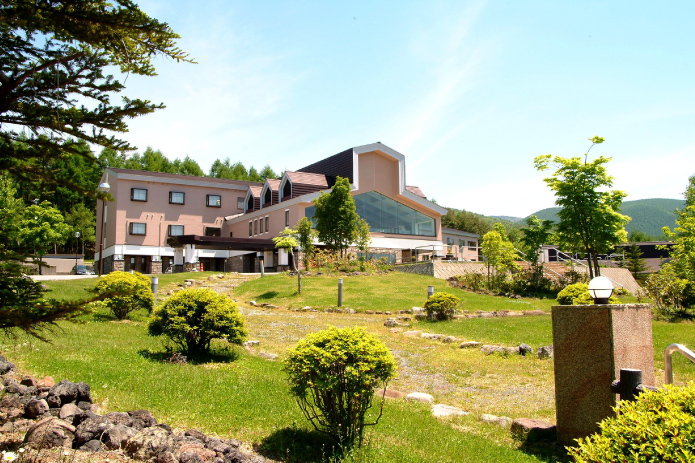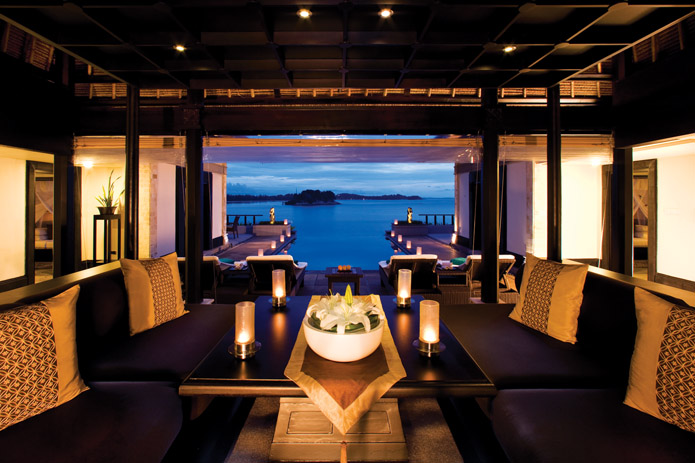Fergus Stewart, general manager of the ANA InterContinental Tokyo, is one of the few in Japan’s beleaguered travel industry to report a successful 2009. But he is quick to point out that the hotel’s positive performance had much to do with both the widely held perception that the flagship hotel is an affordable luxury option and the loyal following in Japan.
“People know that they will get an InterContinental standard of comfort without excessive cost. That is important, especially in this market where the top end is highly competitive. Our central convenient location is also a big draw”, said Glasgow-born Stewart, who joined the hotel in August 2008 with the remit to reposition the business without losing the loyalty built up over the years.
“We need to embrace what is best about the hotel, but add value where necessary”, he said. “So far we have renovated 200 guest rooms and the chapel, and have introduced a ‘hotel-within-a-hotel’ concept with a club lounge that has been very well received”.
At 600m2 the club lounge is the largest in Tokyo and features contemporary luxury decor, classic Arne Jacobsen egg chairs and a cozy library with a book selection of which any bibliophile would be proud.
“It has shower facilities so that guests arriving very early can refresh themselves and a private meeting room provided free-of-charge, with complimentary cocktails at night”, said Stewart.
This year will see further refurbishment for 200 rooms, the hotel lobby, the bridal salon and two restaurants.
“We are particularly excited about the opening of our modern new French restaurant in early 2010 by French master chef Pierre Gagnaire”, said Stewart. “Pierre is such a passionate and dedicated artist that working with him is simply wonderful. We already have a relationship with him at our hotel in Dubai, so we know what we are getting. He wants to go back to creating simple but wonderful food and I think that approach will be very successful at this hotel”.
The restaurant design is by Tokyo-based Ilya Corporation, renowned for its innovative interiors, while Gagnaire will bring in his own creative cooking team. The iconic French chef with multiple Michelin stars to his name will have a captive audience: the hotel reported an occupancy rate of between 80% and 90% in the second half of 2009, virtually unheard of in other hotels in this sector.
Stewart acknowledges that room rates in the industry have come under extreme pressure, but says his approach has been to add value to the guest experience. “For instance, we have a music stylist who consults on what is played at different times of the day and in various locations in the hotel. It’s really transformed the atmosphere. We’ve also introduced a guest experience director, Jerome Palacoeur, who is charged with being ‘in the know’ about the best local finds in Tokyo. If you want to know where the best udon noodle restaurant is, or where to source a specific type of contemporary Japanese art, he will point you in the right direction. It goes well beyond a regular concierge service”.
The hotel’s guest profile changes seasonally. However, it averages about 58% international and 42% domestic guests, although as Stewart points out, “over 90% of revenue from restaurants is from the Japanese sector. The international sector contributes about 10% and this is very important in a market where the value of a room is set and new revenue streams can only be achieved through food and beverages, or weddings. We have a large team of people who deliver well over 500 successful weddings and thousands of events each year”.
One area Stewart is keen to change in Japan is the notorious glass ceiling for women in the hotel industry. “Women perform incredibly well within our industry, but there are very few at a senior executive level”, he said. “We want to see this change and so are focusing on giving key individuals a career path with training and personal mentoring. We promoted a Japanese female employee to manage our new club lounge and the 200 rooms that go with it, and she has been fantastic. Training is a long-term investment and we are determined to have a diversified workforce at all levels throughout the hotel”.
“Japan is country number nine for me,” he added with obvious relish at the challenges ahead. “And so far it is definitely one of the most interesting”.
[greybox]Fergus Stewart was previously general manager of the Hyatt Regency Phuket Resort and Spa and the Hyatt Regency Sharm El Sheikh in Egypt. He was also a manager at the Hyatt Regency La Manga Spain and has worked as the hotel manager of the Landmark Hotel in London, the resident manager at Shangri-la Taiwan and the executive assistant manager for Food & Beverage at the Hong Kong Hotel, Shangri-la Beijing and the Grosvenor House Hotel, London. Stewart completed the UK Diploma in Hotel Catering and Institutional Operations and the Cornell Executive Program in Hospitality Management through the National University of Singapore.
The UK-listed InterContinental Hotels Group (IHG PLC) is the world’s largest hotel group in terms of rooms. The Tokyo property, with 850 guest rooms and 26 function rooms, is one of their largest hotels globally—in size and revenue.[/greybox]





